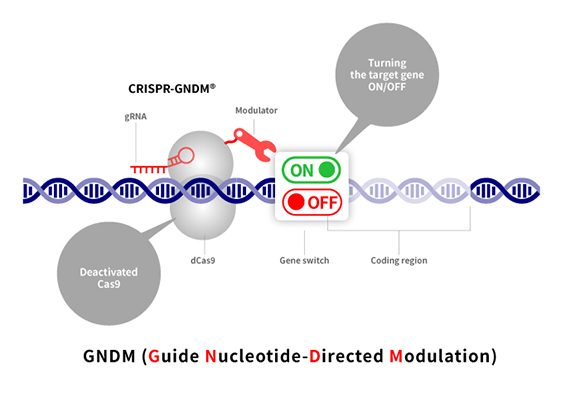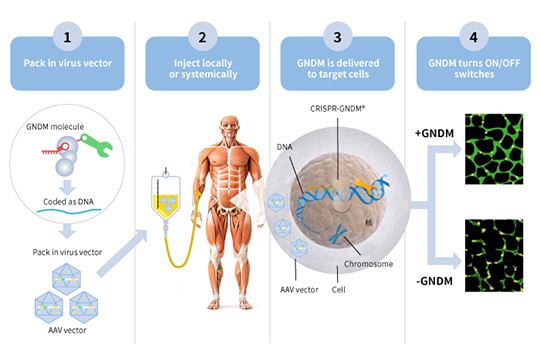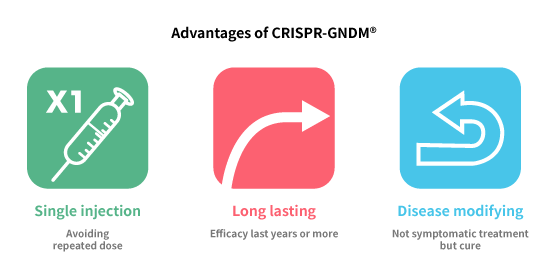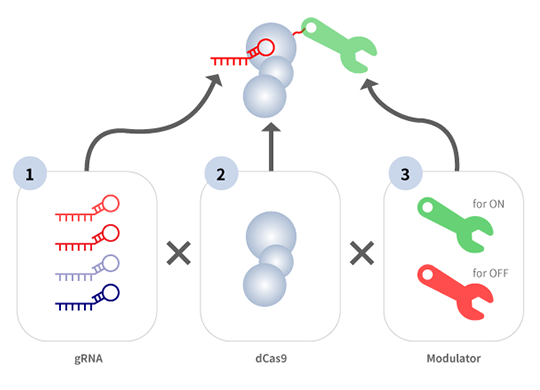What is CRISPR-GNDM®?
Payload packed into AAV to edit epigenome
CRISPR-GNDM® is a proprietary epigenome editing technology developed by Modalis that combines dCas9, which lacks cleavage enzyme activity, with an epigenome editor/modulator and a guide RNA (gRNA) that defines the target site in the genome. CRISPR-GNDM® is packaged in a single AAV and efficiently delivered to target cells to actuate therapeutic gene expression modulation.




